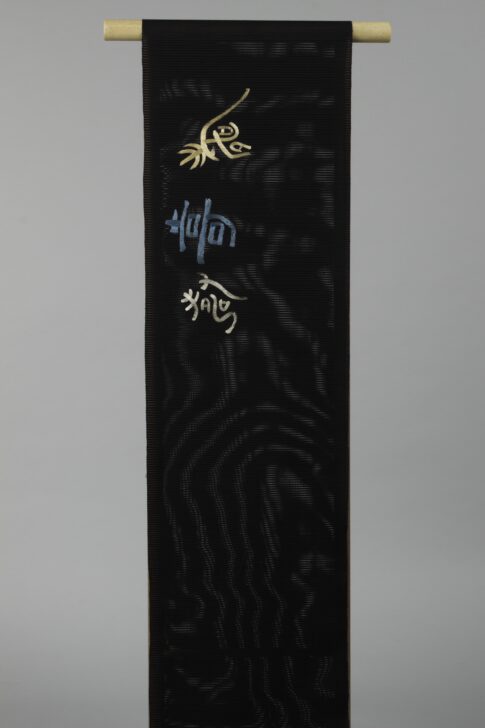Obi
Japanese

Description
Subject Matter:
This is a Summer Nagoya obi in Otaiko gara.
Kotobuki are chinese characters that signify longevity and congratulations.
Ro and Sha textiles, also called usumono, are thin, translucent fabrics used for summer kimonos.
The main difference between Ro and Sha is how they are woven.
Nagoya obi were first produced at the end of the Taisho era, and are shorter than the more formal fukuro and maru obi. A portion of Nagoya obi fabric is folded and stitched in half to make tying easier.
Gara refers to the orientation, arrangement, and surface area of the patterns and pertains to a specific trend and obi tying style. The patterning in the Otaiko gara type is minimal. A few concentrated spots of patterned motif lie on the obi while the rest is left blank. This style was invented during the Edo period (1615-1868) by the female entertainers in Fukugawa, an entertainment district in present-day Tokyo.
Physical Description:
Sheer black Ro summer Obi with eight embroidered silver-beige and various blue modified “Kotobuki”.
Usage Rights:
If you are interested in using an image for a publication, please visit https://umma.umich.edu/request-image/ for more information and to fill out the online Image Rights and Reproductions Request Form.